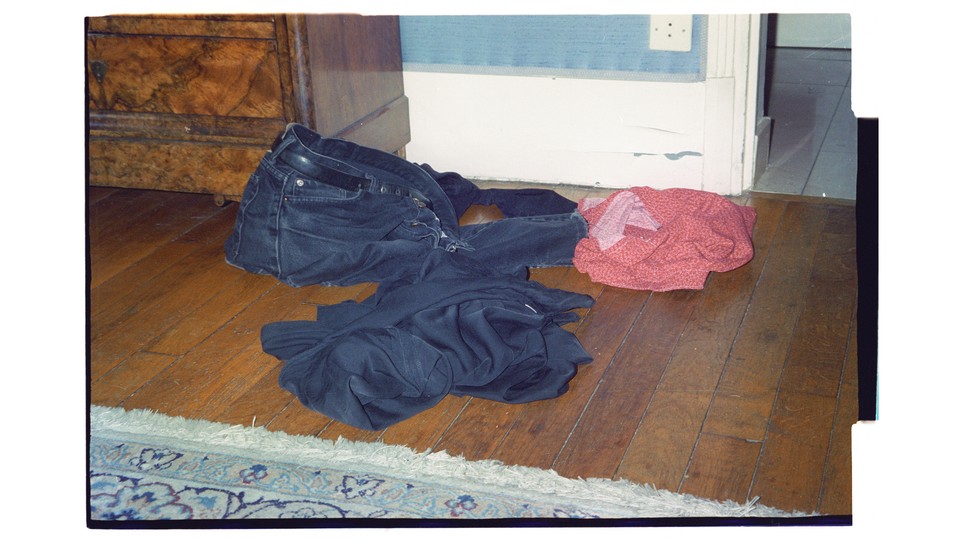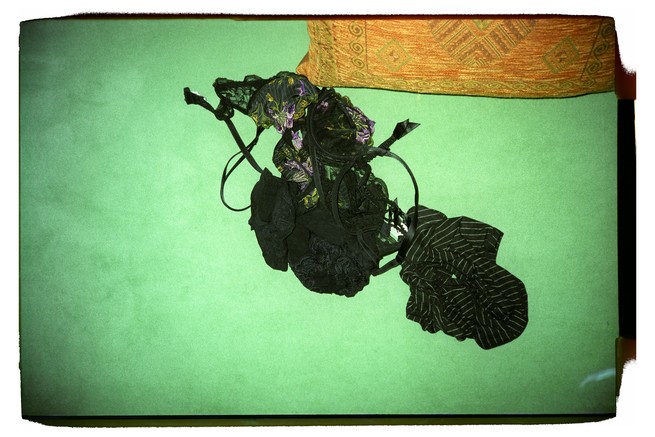A Radical Vision of the Sick Body
6 min read
“Cancer,” Susan Sontag observed in Illness as Metaphor, “is a rare and still scandalous subject for poetry; and it seems unimaginable to aestheticize the disease.” Though she wrote this in the late 1970s, her point still stands. When it comes to descriptions of cancer, in real life or in books, many people struggle to stretch beyond the limited range of accepted, often military metaphors. You’re supposed to “battle” cancer, not prettify it. To veer away from this register runs the risk of sounding flippant, even cruel.
But the French writer Annie Ernaux has never been afraid of breaking taboos. Over the course of her 50-year career, Ernaux—the winner of the 2022 Nobel Prize in literature—has portrayed an illegal abortion (Happening), the complexities of working-class life (A Man’s Place; A Woman’s Story), and the highs and humiliations of sexual obsession (Simple Passion). The Use of Photography, published in 2005 and newly translated into English by Alison L. Strayer, approaches Ernaux’s experience of breast cancer in the early 2000s with a similar fearlessness, emphasizing sensuality in the face of death. It is a radical gesture to treat the sick body, a body threatened by its own demise, as one that is also capable of performing that most generative of acts: sexual intercourse. In doing so, Ernaux takes control of, and breathes life into, the narrative of illness and death.

The Use of Photography is a collaboration, in which Ernaux’s writing alternates with that of the book’s co-author, the photographer and journalist Marc Marie. The book also includes 14 photos taken by them both, each of which features piles of discarded clothing scattered by Ernaux and Marie across the floors of various rooms over the course of their brief love affair. Looking at each image, it is easy to imagine these garments—the tangled straps of a lace bra procured specially for the occasion, the creased leather of a man’s boots—to still be warm from their owners’ skin. But as the text reveals, Ernaux was undergoing chemotherapy when these photos were being taken. In this context, the shapeless clothes take on a mournful air, the appearance of a funeral shroud.
Sex and death, Eros and Thanatos, have been paired in the popular imagination since Freud theorized about their relationship in his 1920 essay “Beyond the Pleasure Principle.” In Ernaux’s book, the frenetic, self-destructive drive and heated sexual passion of her earlier work has subsided into something more elegiac. This is a cold book: It is winter in many of the most memorable photos, even Christmas morning in two of them (“I have no memories of happy Christmases,” writes Marie). The first time they sleep together is on a January evening. When contemplating death, Ernaux briefly imagines “the physical form of a corpse, its icy cold and silence.” The book is slim, its pages filled with white space, and the photos themselves take on the feeling of a mausoleum’s statuary. The clothes, pictured without living bodies inside them, are beautiful and unmoving.
But even amid this chill, Ernaux’s precise rendering of both sex and cancer animates the book. “There is something extraordinary about the first appearance of the other’s sex,” she writes near the beginning, detailing the night she and Marie first slept together. She later likens the viewing of his penis as a counterpart to Courbet’s fixation on a woman’s vulva in The Origin of the World. Later, the “catheter like a growth protruding from my chest” becomes a “supernumerary bone”; the plastic tubing running into the bag holding her medication makes Ernaux look “like an extraterrestrial.”
Cancer depersonalizes the body, turning it foreign. As it undergoes chemotherapy, Ernaux’s takes on an otherworldliness. Her face, without eyebrows or eyelashes, offers “the eerie gaze of a wax-faced doll,” while her limbs, similarly hairless, are turned under Marie’s watchful eyes into those of a “mermaid-woman.” Her physical form now unfamiliar, Ernaux views her treatment from a remove, observing it as if it were a performance: “For months,” she writes, “my body was a theater of violent operations … I performed my task of cancer patient with diligence and viewed as an experience everything that happened to my body.” The notion that being a patient involves acting out one’s assigned role appears in other accounts of breast cancer, too. In her semi-autobiographical 1992 novel, Mourning a Breast, the Hong Kong writer Xi Xi likens the radiation unit to “a film set,” each patient quietly playing their respective parts.

Certain qualities have traditionally been expected from the sick person, especially if she is a woman. There exists a long history of the dying muse, beautiful, feverish, and doomed: In 1852, the artist’s model Elizabeth Siddal posed as Hamlet’s Ophelia for the pre-Raphaelites, her languid sickliness attributed to tuberculosis by her peers. It was indeed that disease that solidified this archetype, and Ernaux thinks to herself at one point that cancer “should become as romantic a disease as tuberculosis used to be.” In the 19th and early 20th centuries, tuberculosis appeared in or inspired works as wide-ranging as Keats’s “La Belle Dame sans Merci,” Puccini’s La Boheme, and Thomas Mann’s The Magic Mountain. Cancer, conversely, is far less glamorized. For the healthy Marie, though, Ernaux’s body, even as it undergoes chemotherapy, is still sexual; at one point, Marie incorrectly assumes that the cancer is in Ernaux’s left breast—the one less swollen. “He could probably not imagine,” Ernaux writes, “that the prettier of the two was the one with cancer.”
Though Marie’s sections are, unsurprisingly, less interesting than Ernaux’s (it’s tough to go head-to-head with a Nobel laureate), their appearance in the book—unmarked, without a chapter heading or a visual symbol to differentiate them—creates an egalitarian dynamic. Both Ernaux and Marie assume the roles of creator and muse. A fundamentally different power structure is at play here than the one of vital artist and feeble subject that dominated the tubercular age: Though cancer saps Ernaux of her life force, it is also for her an unexpected source of inspiration.
For Ernaux, this dynamic is political. At the time of her writing, she notes, 11 percent of French women “have had, or currently suffer from breast cancer.” Recording her own experiences publicly identifies her as one of them, her cancerous breast as one of “three million … stitched, scanned, marked with red-and-blue drawings … hidden under blouses and T-shirts, invisible.” She writes that “we must dare to show them one day. (Writing about mine is part of this unveiling.)” Appearing as it does in an organ so closely identified with female sexuality, breast cancer is unique; it is both a focal point of cancer awareness (at one point, Ernaux remarks dryly that, upon reading in an issue of Marie Claire that it is Breast Cancer Awareness Month, “I was keeping up with fashion”) and also a disease that has been hidden away, its disfigurements commonly concealed by cosmetic surgery. There is an echo, in Ernaux’s “unveiling,” of Audre Lorde’s rallying cry on the first page of The Cancer Journals, her 1980 account of her own experience of breast cancer and subsequent mastectomy: “I am a post-mastectomy woman who believes our feelings need voice in order to be recognized, respected, and of use.”
In this lineage of women writing about breast cancer, Ernaux’s focus on eroticism reminds the reader that the cancer patient still has wants and desires; that is, she is still a human being. Discussing cancer will always reveal the paucity of language—what it can and cannot say for the person suspended between life and death. By the book’s end, Ernaux has reached her own conclusion: “I can no longer abide novels or films,” she writes, “with fictional characters suffering from cancer … how do they dare to invent these kinds of stories? Everything about them seems fake.” With its aim to transmit into words and images what is so often left unsaid about breast cancer, The Use of Photography is the opposite: the real thing.
When you buy a book using a link on this page, we receive a commission. Thank you for supportingThe Atlantic.



